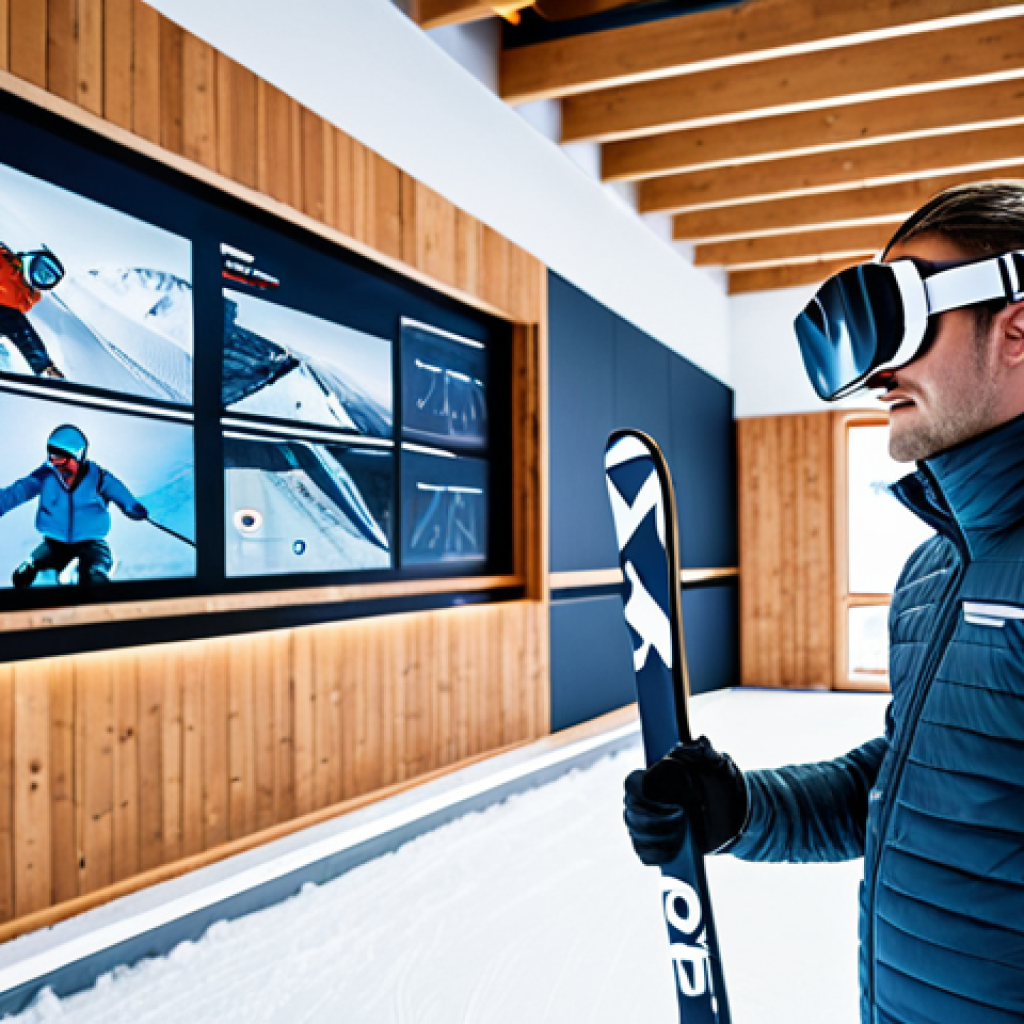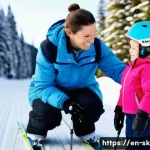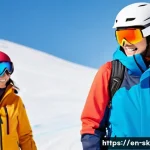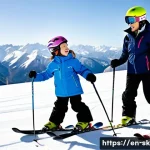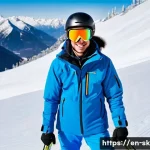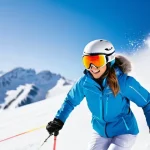Okay, here’s the blog intro:Ever wondered what it takes to transition from teaching weekend warriors on the bunny slopes to competing on the world stage?
It’s a leap, let me tell you, one I recently experienced firsthand. For years, I’ve been that friendly face helping beginners find their snow legs, but this year, things got a whole lot more… intense.
I decided to throw my hat in the ring and compete in an international ski instructor competition. It was a wild ride filled with adrenaline, unexpected challenges, and a whole lot of learning!
The world of competitive skiing instruction is evolving fast, embracing AI-powered training tools and VR simulations to refine techniques, something I got a serious dose of.
The pressure was on, but the experience was invaluable. Let’s dive into the details and find out exactly how it all went down!
Okay, here’s the blog post body:
Understanding the Evolving Landscape of Ski Instruction
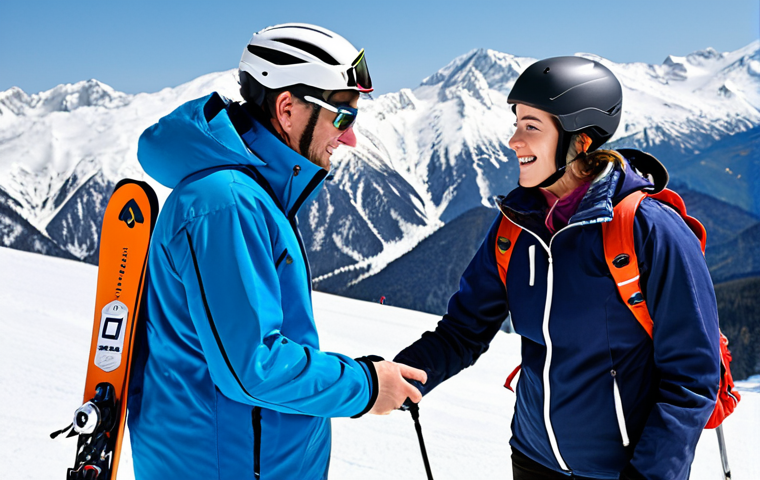
The Rise of Tech-Integrated Training
It’s not your grandpa’s ski school anymore, that’s for sure. The competition was an eye-opener. I’m talking VR simulations that let you practice your technique on a virtual slope before you even hit the snow, AI-powered feedback systems analyzing your every move, and data analytics breaking down your performance in granular detail.
It’s wild! I spent hours tweaking my stance based on AI suggestions – stuff I never would have considered before. This tech isn’t just for the elite athletes, either.
Ski resorts are increasingly using these tools to train instructors, ensuring consistent and effective teaching methods across the board. Think about it: new instructors can accelerate their learning curve, veteran instructors can refine their skills with data-driven insights, and ultimately, the students benefit from higher-quality instruction.
Beyond the Basics: Focusing on the Individual
One thing that really stood out was the emphasis on personalized instruction. Forget the one-size-fits-all approach. The modern ski instructor is more like a coach, tailoring their teaching to the individual student’s needs, goals, and learning style.
I had to demonstrate my ability to assess a student’s strengths and weaknesses quickly, adapt my teaching methods on the fly, and provide constructive feedback that resonated with them.
It was all about understanding their motivations, addressing their fears, and building their confidence on the slopes. During one of my evaluated sessions, I had a student who was terrified of heights.
I didn’t force them to go to the top of the mountain. Instead, we worked on balance and control on a gentle slope, gradually building their confidence until they felt comfortable enough to tackle a slightly steeper run.
Gear and Gadgets: Leveling Up Your Performance
The Importance of Cutting-Edge Equipment
Let’s be real, having the right gear can make or break your performance. I’m not just talking about top-of-the-line skis and boots (although those definitely help!).
I’m talking about the whole ecosystem of gadgets and accessories designed to enhance your skiing experience. Think heated socks to keep your feet warm on those frigid days, GPS trackers to monitor your speed and distance, and even helmet-mounted communication systems to stay in touch with your team.
I saw instructors using specialized tools to measure slope angles, analyze snow conditions, and even assess the impact of different wax types on ski performance.
The amount of data they were collecting was mind-blowing! And of course, there’s the aesthetic factor. Looking good on the slopes can boost your confidence and make you feel like a pro, even if you’re just carving gentle turns.
Staying Connected: Smartwatches and Communication Systems
During the competition, the sheer amount of gear and tech the other instructors brought was astounding. Smartwatches with specialized ski apps provided real-time data on speed, altitude, and even jump analytics.
Communication systems embedded in helmets allowed seamless coordination between instructors during group lessons and in emergency situations. I even saw some instructors using augmented reality goggles that projected information onto the slopes, such as optimal turning points and potential hazards.
I learned quickly that embracing this technology wasn’t just about showing off—it was about enhancing safety, improving performance, and staying connected in an environment where communication can be challenging.
Mental Fortitude: The Unsung Hero of Ski Instruction
Conquering Fear and Building Confidence
The mental aspect of ski instruction is often overlooked, but it’s just as important as technical skill. As instructors, we’re not just teaching people how to ski, we’re helping them overcome their fears, build their confidence, and push their boundaries.
I witnessed instructors using positive affirmations, visualization techniques, and even mindfulness exercises to help their students manage anxiety and stay focused on the task at hand.
I even incorporated some of these techniques into my own teaching. Before a particularly challenging run, I would lead my students in a short breathing exercise to calm their nerves and center their minds.
It made a noticeable difference in their performance and their overall enjoyment of the experience.
Adaptability and Problem-Solving Under Pressure
The slopes are unpredictable. Weather conditions can change in an instant, equipment can malfunction, and students can have unexpected reactions. As a ski instructor, you need to be able to think on your feet, adapt to changing circumstances, and solve problems quickly and efficiently.
I saw instructors dealing with everything from minor injuries to equipment failures to sudden blizzards. They remained calm, assessed the situation, and took appropriate action to ensure the safety and well-being of their students.
This level of adaptability and problem-solving requires a deep understanding of the mountain environment, a strong sense of responsibility, and the ability to remain level-headed under pressure.
Building a Global Network: Connecting with Instructors Worldwide
Sharing Knowledge and Best Practices
One of the most rewarding aspects of the competition was the opportunity to connect with ski instructors from all over the world. I met people from Austria, Japan, Argentina, and everywhere in between.
Each of them brought unique perspectives, techniques, and teaching philosophies to the table. We shared stories, exchanged tips, and learned from each other’s experiences.
I discovered new ways to approach common challenges, gained insights into different cultural attitudes towards skiing, and made lifelong friends in the process.
It was a powerful reminder that the ski instruction community is a global family, united by a shared passion for the sport and a commitment to helping others experience the joy of skiing.
Collaborating on Innovative Teaching Methods
The competition fostered a collaborative environment where instructors were encouraged to share their innovative teaching methods and techniques. I participated in workshops where we brainstormed new ways to engage students, incorporate technology into lessons, and address the specific needs of different learning styles.
I saw instructors using gamification to make learning more fun, incorporating storytelling to create a more immersive experience, and even using music to enhance rhythm and coordination.
The level of creativity and innovation was truly inspiring. It was a reminder that there’s always room for improvement and that the best ideas often come from collaboration and cross-pollination of perspectives.
Mastering the Art of Communication: Engaging Your Students
Clear and Concise Instructions
Communication is key in ski instruction. You need to be able to explain complex concepts in a clear and concise manner, provide constructive feedback in a way that motivates students, and adapt your language to suit their level of understanding.
I focused on using simple, jargon-free language, demonstrating techniques visually, and checking for comprehension frequently. I also made a conscious effort to use positive language and encouragement, even when students were struggling.
It’s amazing how much of a difference a few words of encouragement can make in boosting a student’s confidence and motivation.
Building Rapport and Trust
Beyond the technical aspects of communication, it’s also important to build rapport and trust with your students. People learn best when they feel comfortable, respected, and supported.
I tried to create a positive and inclusive learning environment where students felt safe to ask questions, make mistakes, and challenge themselves. I shared personal stories, listened attentively to their concerns, and celebrated their successes, no matter how small.
The more connected I felt to my students, the more effective I was as an instructor.
Monetizing Your Skills: Turning Passion into Profit
Leveraging Social Media and Content Creation
Let’s face it, ski instruction is a labor of love, but it’s also a job. And like any job, it’s important to find ways to increase your earning potential and build a sustainable career.
One of the most effective ways to do this is by leveraging social media and content creation. I saw instructors building massive followings on Instagram and YouTube by sharing tips, tricks, and behind-the-scenes glimpses of their lives on the slopes.
They were monetizing their content through sponsorships, affiliate marketing, and even by selling online courses and coaching programs.
Building a Personal Brand
In today’s competitive market, it’s more important than ever to build a personal brand. This means defining your unique value proposition, crafting a compelling story, and consistently communicating your message across all channels.
I focused on showcasing my expertise in a specific area of ski instruction, such as freestyle skiing or adaptive skiing. I created a professional website and social media profiles, developed a consistent brand aesthetic, and actively engaged with my audience.
I even started writing blog posts and articles for industry publications to establish myself as a thought leader in the field.
Future Trends in Ski Instruction
Sustainability and Eco-Conscious Skiing
One topic that kept resurfacing during breaks and informal chats was the growing awareness of sustainability in the ski industry. More and more resorts are focusing on reducing their environmental footprint, and as instructors, we have a role to play in promoting eco-conscious skiing.
This includes educating students about responsible snow sports practices, such as staying on marked trails, avoiding sensitive wildlife areas, and minimizing waste.
I saw workshops dedicated to teaching instructors how to incorporate environmental awareness into their lessons. Topics included the impact of climate change on snow conditions, the importance of water conservation, and the benefits of using eco-friendly equipment.
It’s not just about preserving the slopes for future generations; it’s about making sure that skiing remains a viable and enjoyable activity in the long term.
Adaptive Skiing and Inclusivity
Another important trend is the increasing emphasis on adaptive skiing and inclusivity. Skiing should be accessible to everyone, regardless of their physical or cognitive abilities.
Adaptive ski programs are becoming more widespread, providing specialized equipment and instruction to individuals with disabilities. I had the opportunity to observe some adaptive ski lessons during the competition.
It was incredibly inspiring to see the joy and empowerment that skiing can bring to people of all abilities. It reinforced the idea that skiing isn’t just a sport; it’s a way to connect with nature, challenge yourself, and experience the freedom of movement.
| Aspect | Traditional Ski Instruction | Modern Ski Instruction |
|---|---|---|
| Focus | Basic skills and techniques | Personalized learning and holistic development |
| Technology | Limited or no technology | Extensive use of VR, AI, and data analytics |
| Communication | One-way instruction | Two-way communication and active listening |
| Mental aspect | Minimal emphasis | Significant focus on confidence building and mental resilience |
| Global network | Isolated practice | Collaborative knowledge sharing and best practices |
In Conclusion
The world of ski instruction is constantly evolving, driven by technology, a focus on personalization, and a growing emphasis on mental fortitude and global collaboration. By embracing these trends, ski instructors can enhance their skills, elevate their teaching, and create unforgettable experiences for their students. The future of ski instruction is bright, and I’m excited to be a part of it!
Useful Tips to Know
1. Invest in quality gear: Well-maintained skis, boots, and outerwear are essential for both your comfort and performance on the slopes.
2. Stay updated on certifications: Maintaining current certifications ensures you’re up-to-date on the latest safety standards and teaching techniques.
3. Practice effective communication: Clear and concise instructions, coupled with active listening, are crucial for engaging your students.
4. Build your online presence: Utilize social media platforms to showcase your skills, connect with potential clients, and establish yourself as a ski instruction expert.
5. Prioritize safety: Always prioritize the safety and well-being of your students, and be prepared to handle emergencies effectively.
Key Takeaways
Modern ski instruction integrates technology, personalization, and mental preparation. A global network and continuous learning are vital for growth. Monetization through social media and personal branding is essential for career sustainability.
Frequently Asked Questions (FAQ) 📖
Q: What was the biggest surprise you encountered transitioning from recreational ski instruction to a competitive environment?
A: Honestly, the biggest shock was the level of technological integration. I knew things were getting more advanced, but the reliance on AI-powered feedback and VR simulations for refining technique was something else.
We were constantly analyzing data points from our runs and tweaking our form based on what the AI suggested. It was a steep learning curve, especially for someone more accustomed to teaching the good ol’ snowplow!
Q: You mentioned the competition involved international instructors. Did you notice any particular differences in teaching styles or approaches based on different countries?
A: Absolutely! It was fascinating to see how different cultures approach ski instruction. For instance, the Austrian instructors seemed to focus heavily on tradition and fundamental techniques, emphasizing a strong base before moving onto more advanced skills.
The Scandinavians, on the other hand, incorporated a lot of playful, game-based learning, even at the advanced levels. It really highlighted the fact that there’s no single “right” way to teach, and that understanding diverse approaches can make you a much more effective instructor.
Q: Given your experience, what’s one piece of advice you’d give to other ski instructors considering competing at a higher level?
A: Don’t underestimate the mental game! Physically, I was in pretty good shape, but the pressure of performing perfectly under scrutiny, especially with the added element of technology evaluating every move, really got to me at times.
Focus on developing your mental resilience, practicing visualization, and learning to manage anxiety. And most importantly, remember to have fun – it’s still skiing, after all!
A few deep breaths before each run, telling myself “You got this!” really helped keep me grounded.
📚 References
Wikipedia Encyclopedia
구글 검색 결과
구글 검색 결과
구글 검색 결과
구글 검색 결과
구글 검색 결과
